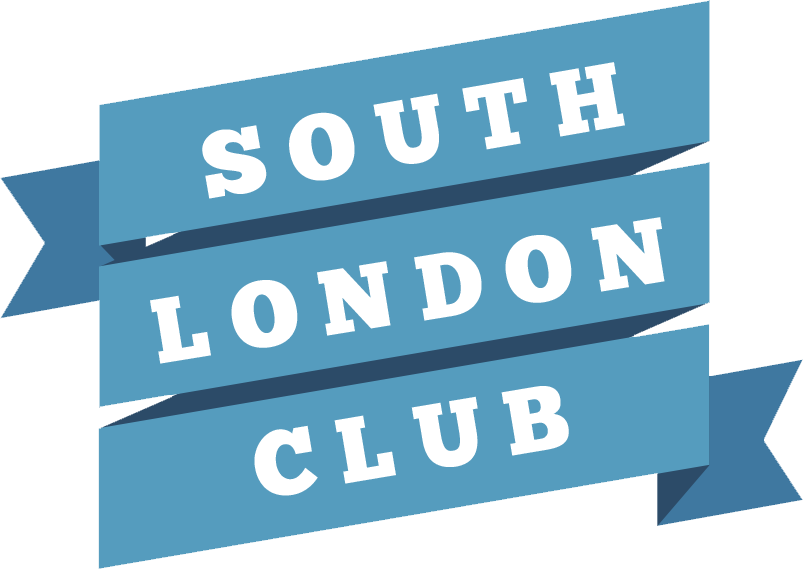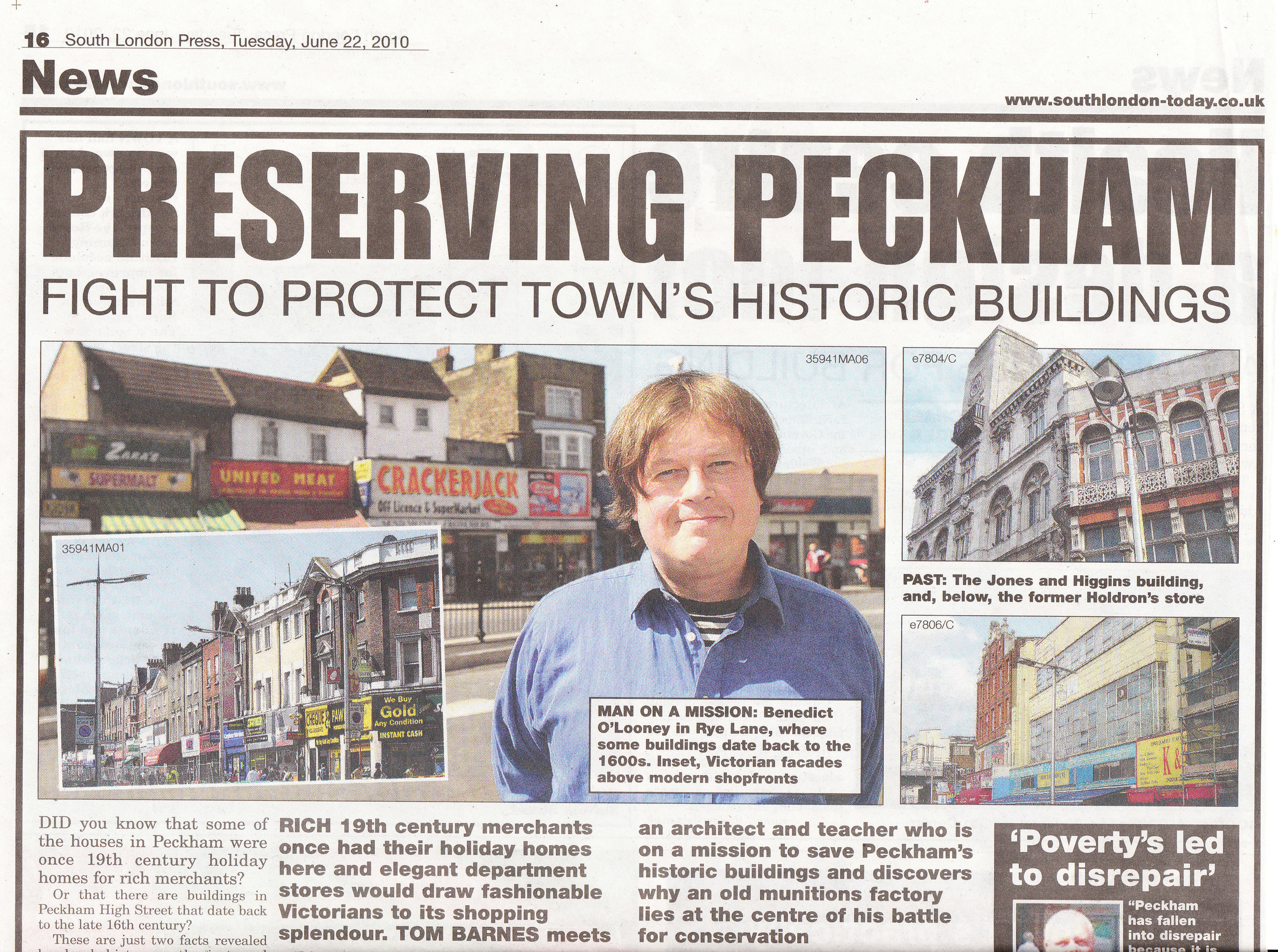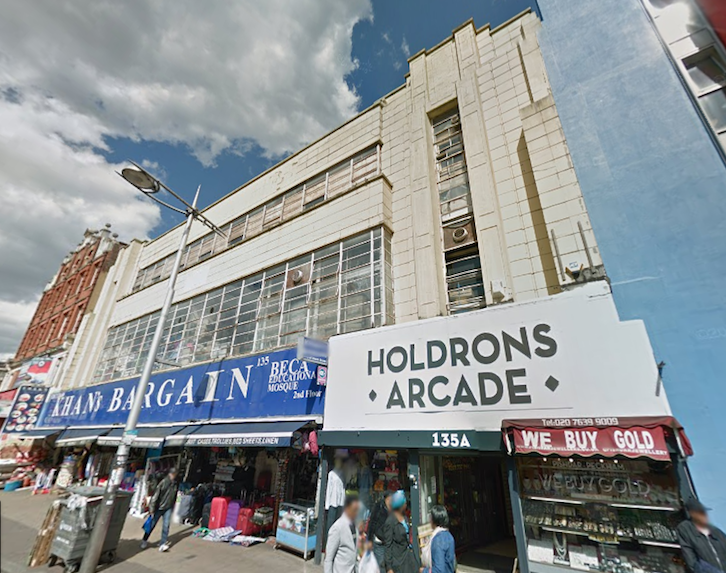Love Peckham? How familiar are you to Peckham's intriguing history? We tasked Sareta Puri with briefly documenting the changes that have occurred on Rye Lane and how the local business community has changed with it.
Back in the ’80s and ’90s, many people’s idea of Peckham was based on the ‘rough around the edges’ images in TV shows like Only Fools and Horses and Desmond’s. Tower blocks remain, wheeler-dealers are ten-a-penny, and hair-care is still a central part of Peckham life, but there’s no denying that the area has changed a great deal in recent years.
Following areas like Notting Hill in the 1980’s and, more recently, Hackney, the often undesired gentrification of London has finally seeped South and has made Peckham a highly sought-after location in London.
Anyone familiar with Peckham will know that Rye Lane is where it all happens. Reams of shops selling cheap vegetables from across the globe, an abundance of chicken shops and heaving weekend queues for venues like Canavan’s Pool Club and the Bussey building all help make Rye Lane one of the most diverse areas in London, and even the UK.
Rye Lane runs half a mile from Peckham High Street at the north, down to the corner of Copeland Road where The Nags Head sits at the south. It features several Georgian and Victorian buildings which have been protected from demolition through the work of the Peckham Society and Peckham Vision. In 2011, Rye Lane became a Conservation Area in recognition of its architectural and historic interest.
Photo: Peckham Vision
Originally called 'South Street' and now named after Peckham Rye park, Rye Lane is a very different place now compared to the early 1700s, when Peckham was just a village of around 600 people on the outskirts of London. The street then would have been one of the main thoroughfares into London, bustling with market stalls, colourful gardens and rows of orchards growing produce for nearby London’s increasingly demanding population.
Photo: South London Guide
Back then, Peckham was one of the last stopping points for traders on their way into London, who would have stopped for the night at a local inn – which is perhaps why the area is so well-populated with pubs! Over the years, Rye Lane and the surrounding streets became an area of important industrial activity due to its links into London and access to markets, fields and even docks.
It is now known for being home to several of south London’s hippest bars and clubs, nestled among shops and markets that boast decades of heritage. This diversity is a cornerstone of Peckham’s distinctive identity, and a reason why so many people are attracted to the area. Rye Lane’s most famous venue is the Bussey Building - a multi-storey multi-arts venue that houses CLF Art Café, record shop Rye Wax, Rooftop Film Club, Yogarise and The Yard gym. Named after manufacturer George Bussey, the building was originally a gun factory and shooting range in the 19th century that became a space for creatives and artists in the ’90s and is still home to several art studios. The Bussey also hosts eclectic club nights, exhibitions, markets, screenings and events and is undoubtedly one of the reasons so many people have grown to know Peckham in recent years.
But as with any area of development, buildings like this often come under threat, as property developers strive to get their hands on land to create housing, which once built is often unaffordable to local residents. Thankfully, a campaign citing Bussey’s cultural importance and heritage saved the building in recent years when it faced this danger – for the time being anyway.
This isn’t the first time the building came under threat. In 2009 it was saved from demolition to make space for a tram depot that was part of a plan to regenerate Peckham, but which never came to be. Instead, the Overground (known affectionately as the Ginger Line to many a South-Londoner) was extended in 2012, linking Peckham to Clapham Junction in the west and Highbury and Islington in the north. Rye Lane has a long history of being a bustling transport hub. In the 1850s buses replaced horse-drawn carriages as Peckham’s locality to London became recognised. Not long after, towards the end of the 19th century, the railway was opened granting yet more access to the City and resulting in a population boom that saw any remaining fields being turned into housing.
As Peckham became a sought-after area, Rye Lane developed into a major shopping destination (often referred to as the ‘Golden Mile’) which even rivalled the likes of Oxford Street. In 1867, Jones & Higgins opened a store on the corner of Rye Lane and Peckham High Street that went on to become one of south London’s best-known department stores until its closure in the ’80s. The Building and clocktower still serve as a time-capsule, albeit generally unnoticed, into Peckham’s glorious retail heritage.
Photo: Google
Photo: Ideal Homes
Other notable shops that made Rye Lane a shopping hotspot included Holdron’s Department Store, which included an outlet of Selfridges, and branches of popular stores such as Lipton’s and Dunn’s. Today, Holdron’s Arcade (as it is now known) is home to several exciting start-ups including; YAM Records; Wavey Garms; One Organic and Nutkin, a vegetarian & vegan cafe specialising in nut-based vegan cheese. There is also talk of re-developing the Holdron Arcade, with plans to link the indoor shopping area to the now-famous Copeland Park square at the rear.
During the ’20s and ’30s, Peckham continued to thrive despite the economic downturn, and shops including C&A, BHS (now Primark) and Sainsbury’s (now Clarks) all opened. However, the closure of Holdron’s in 1949 marked the start of the retail decline. A small section of Holdron’s art deco frontage is all that remains.
Photo: Ian Visits
Photo: Google
Although Rye Lane managed to survive the Second World War, perhaps due to its distance from more central targets, other local areas started to become well-linked to central London, leading to more shops closing and some industries relocating. During the ’70s, Peckham became one of the most deprived areas in Europe, gaining a notoriously bad reputation – not helped by its depiction on television and the murder of ten-year-old Damilola Taylor, on the North Peckham Estate in 2000.
However, during the ’90s, the European Union ploughed considerable investment into the area – initially to redevelop the North Peckham Estate, followed by the building of Peckham Library, which sits as a colourful beacon near the top of Rye Lane.
Thankfully, Rye Lane is thriving once-again with local favourites such as Khan’s Bargains (a one-stop-shop for any Asian and Middle Eastern foods and spices); Asian Takeaway (a tiny, almost-hidden stall that serves cheap and filling naan wraps) and Roya Textiles (a more recent venture providing colourful fabrics for both Peckham's out-spoken fashion crowd and the more traditional garments of African & Asian origin) - showing that independent businesses still play a crucial role in the community. What remains to be seen, however, is how this independent business community will fare in the face of investment from London’s big property magnates and the gentrification that inevitably comes with it.
Gentrification is not, contrary to some local opinion, necessarily a bad thing in itself; as long as local people & business owners can hold onto their slice of the pie by adapting and developing to changing demands, then all stand to benefit from the influx of affluence. Take Corals (the locally-owned restaurant, not the betting shop) as an example. Formerly known as the vibrant Lerryn’s -a cafe famous for it’s fun, simple decor, affordable food, battles with the council and coffee ‘n’ cocktails ‘til late- this quirky local restaurant & bar is a development of its former self, and is still owned, in part, by Lerryn.
Sure, the arrival of a bar from shabby chic pub crew Antic and numerous chain stores popping up at the top of the street have led to some people claiming that the area is losing its identity – but diversity, in all forms, is what make both Rye Lane and Peckham such fascinating and important parts of London. It’s not hard to see why so many people love it, Del Boy included.
Words by Sareta Puri
What is the South London Club?
The South London Club is a community of people who care about South London. We’re committed to supporting independent businesses and craftspeople because of the value they bring to our lives and societies. That’s why we were recently awarded with Social Enterprise status.
With your South London Club membership card, you'll not only have a guide to discovering the best independent businesses South London has to offer, but access to hundreds of exclusive discounts.








